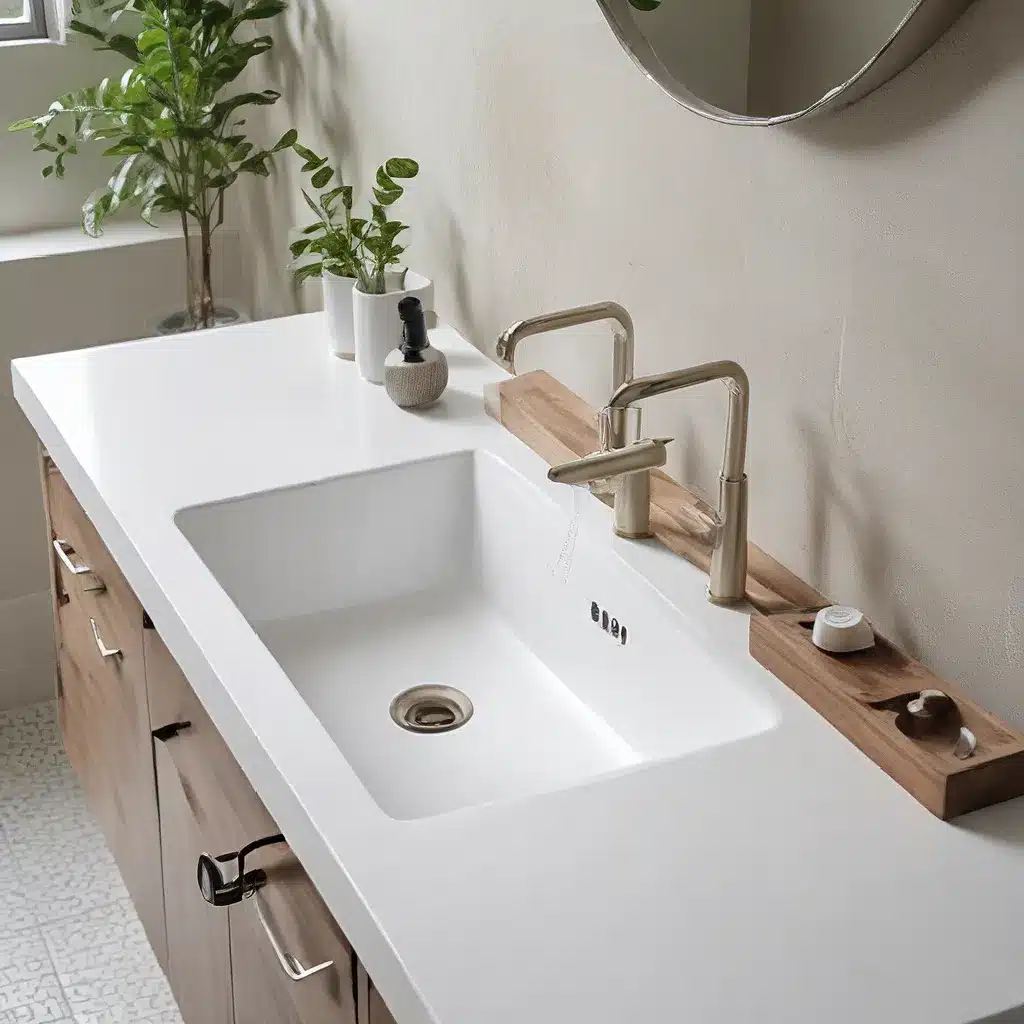
In today’s eco-conscious world, the environmental impact of our everyday choices has become increasingly important. When it comes to bathroom fixtures, the sustainability of materials and manufacturing processes is a crucial consideration. As we explore the evolving landscape of washbasins, sinks, and other bathroom essentials, it’s essential to understand the environmental implications of these products.
The Rise of Eco-Friendly Bathroom Fixtures
Over the past few decades, the bathroom fixture industry has undergone a significant transformation. Driven by a growing awareness of sustainability and a desire for more environmentally responsible choices, manufacturers have begun to prioritize the use of sustainable materials and eco-friendly production methods.
One of the most notable advancements has been the increased adoption of vitreous china sinks. This durable and long-lasting ceramic material has been used in bathroom fixtures for centuries, but recent innovations have made it an even more attractive option for environmentally conscious consumers.
Vitreous china sinks are known for their resistance to scratches, stains, and other imperfections, thanks to their high-gloss enamel coating. This durability not only enhances the product’s lifespan but also reduces the need for frequent replacements, a key factor in minimizing the environmental impact.
Sustainable Manufacturing Practices
The manufacturing process for vitreous china sinks is also evolving to prioritize sustainability. While the traditional methods involve mining raw materials like feldspar and quartz, which can have an environmental impact, some manufacturers are now implementing more eco-friendly practices.
These include:
- Recycling and Waste Reduction: Manufacturers are finding ways to recycle and reuse materials, minimizing the amount of waste generated during production.
- Water Conservation: The manufacturing process for vitreous china sinks requires a significant amount of water, but some companies are working to reduce their water consumption through recycling and more efficient systems.
- Energy Efficiency: Advancements in technology and automation have allowed manufacturers to optimize their energy usage, reducing the carbon footprint of the production process.
Sustainable design has also become a key focus for many bathroom fixture manufacturers, with a growing emphasis on utilizing renewable resources and minimizing the environmental impact of their products throughout their life cycle.
Choosing Sustainable Washbasins
When selecting a washbasin or sink for your bathroom, considering the sustainability of the material and manufacturing process is crucial. Here are some factors to keep in mind:
Material Composition: Look for sinks made from vitreous china, as this material is known for its durability and environmental friendliness. Some manufacturers are also experimenting with alternative materials, such as recycled glass or natural stone, to further enhance the sustainability of their products.
Production Methods: Inquire about the manufacturer’s commitment to sustainable practices, such as water conservation, waste reduction, and renewable energy usage. This information is often readily available on the company’s website or through customer service representatives.
Longevity and Maintenance: Choosing a sink that is designed to last for years, if not decades, can significantly reduce the environmental impact over time. Look for features like scratch-resistant surfaces and easy-to-clean designs that will minimize the need for replacements.
Certifications and Eco-Labels: Many bathroom fixture manufacturers now offer products with sustainability certifications or eco-labels, such as WaterSense or LEED. These designations can help you identify the most environmentally responsible options.
The Benefits of Sustainable Washbasins
Investing in a sustainable washbasin not only benefits the environment but can also provide long-term value for your home or commercial space. Some of the key advantages include:
-
Reduced Environmental Impact: By choosing a sink with a low carbon footprint and minimal waste generation, you’re directly contributing to a healthier planet.
-
Cost Savings: Durable, long-lasting sinks can save you money in the long run by reducing the need for frequent replacements and associated labor costs.
-
Improved Hygiene: Many sustainable bathroom fixtures, like vitreous china sinks, feature easy-to-clean surfaces that resist stains and bacteria, promoting a more hygienic environment.
-
Aesthetic Appeal: Eco-friendly bathroom fixtures are often designed with a focus on timeless style and elegance, ensuring they complement a wide range of interior design themes.
-
Increased Property Value: Sustainable bathroom upgrades can enhance the overall appeal and value of your home or commercial property, making it a wise investment for the future.
Embracing the Future of Sustainable Bathrooms
As the demand for environmentally responsible products continues to grow, the bathroom fixture industry is rising to the challenge. Manufacturers are constantly innovating, developing new materials and production methods that minimize the environmental impact without sacrificing quality or design.
By choosing sustainable washbasins and sinks, you’re not only making a positive difference for the planet but also investing in the long-term durability and value of your bathroom. As we collectively strive for a more sustainable future, let’s embrace the transformative power of eco-friendly bathroom fixtures.

